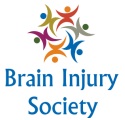
Whenever a driver gets into a race car, he or she is fully aware of the risks of severe injury or death. But when a horrible crash occurs, it is still a shock. That is what the family members, friends and fans of Formula 1 driver Jules Bianchi are experiencing after an Oct. 5 crash in the Japanese Grand Prix.
Bianchi suffered a form of traumatic brain injury (TBI) known as a diffuse axonal injury (DAI) after his car hydroplaned on a wet track and hit the rear of a vehicle that was being used to remove the wreckage of another driver’s car. Doctors classified Bianchi’s condition as critical but stable after emergency brain surgery.
What is a Diffuse Axonal Injury?
DAI commonly occurs in high-speed car accidents that result in either traumatic acceleration or deceleration. Trauma is not focused in one area of the brain, but rather spread across the brain due to a shockwave caused by the sudden impact. As a result, the injury leads to bruising and kills cells.
Because the brain swells in response to the injury, it worsens the problem due to a restriction of blood flow. Unfortunately, the recovery rate from this type of injury, as reported by MSN.com, is not good.
According to the Brain Injury Institute, car accidents are responsible for more than 17 percent of all traumatic brain injuries in the United States – second only to falls. When swelling occurs (such as in the case of DAI) and surgery is not immediately performed, it can lead to severe damage or death.
Symptoms and Diagnosis of DAI
If someone suffers a DAI and does not lose consciousness, he or she may show other signs of brain damage. A medical professional will typically ask the victim several questions, such as how the accident took place, what type of symptoms the victim is experiencing, and other questions that will test his or her cognitive ability.
Typically, however, a DAI victim is unconscious and different types of tests are required. These include:
- Magnetic resonance imaging (MRI) – This is the test most experts prefer for diagnosing DAI. It shows a detailed cross-section of the brain using radio waves, magnets and a computer screen.
- CT Scans – There are some instances, however, where a CT scan is used to get detailed images inside the brain. But many experts believe that because these scans often result in false negatives, they cannot be viewed as a reliable method for diagnosing DAI.
Treatment
Once emergency methods have been used to reduce brain swelling, other medications such as steroids are commonly used to decrease further inflammation. If the injury is considered mild or moderate, the patient will undergo rehabilitation once he or she is awake and stable.
Prognosis
If a person suffers a mild form of DAI, there is a good chance that he or she will recover completely with few – if any – long-term problems. Unfortunately, 90 percent of patients who suffer a severe DAI never regain consciousness. Of the 10 percent who do, they typically remain severely impaired for the rest of their lives.
